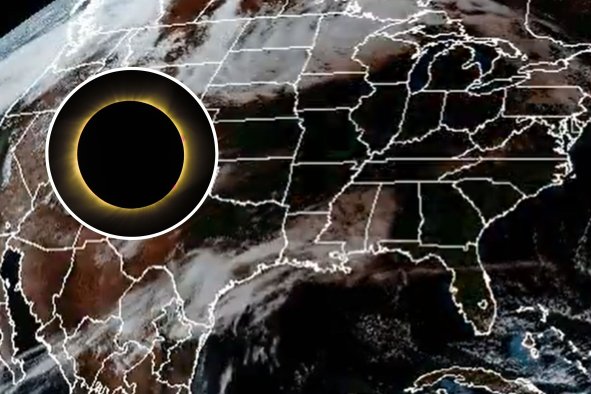A NASA experiment that sent a spacecraft slamming into the side of an asteroid may have sent debris flying into space, possibly into the path of Mars.
The asteroid, named Dimorphos, was hit by NASA's Double Asteroid Redirection Test (DART) in September 2022 as part of an experiment to investigate how the asteroid's path would be deflected.
In the months since, scientists have found that not only was the asteroid's orbit around its larger companion Didymos altered by 32 minutes, but its shape was totally changed by the collision.
Now, according to a pre-print paper by researchers from Johns Hopkins Applied Physics Laboratory and the DART team—yet to be published in a peer-reviewed journal—some of the boulders flung off during the impact may be on a collision course with Mars.
Dimorphos is 525 feet in diameter, and orbits a larger, 2,560-foot asteroid known as Didymos. The DART mission was designed to test how slamming a spacecraft into the side of an asteroid would impact how it travels through space, and therefore if doing so could successfully deflect a space rock from a collision with Earth.
A paper in the journal Nature Astronomy from earlier this year revealed that the DART impact resulted in "more than 1.3–2.2 × 107 kg" being flung out into space from the collision, which was equivalent to around 0.3 to 0.5 percent of the mass of the entire asteroid. This caused 8 percent of Dimorphos' mass to be displaced around the asteroid, causing the rock to entirely change shape.
Now, the new pre-print says that the ejecta thrown out into the solar system consisted of 37 boulders, some of which measured up to 22 feet across.
"We did not expect that many boulders that were that big to be blown off," Andy Rivkin, an astronomer at the Johns Hopkins Applied Physics Laboratory and a member of the DART team, told National Geographic.
According to the paper, none of the boulders will threaten the Earth, with the closest passing at a distance of around 1.9 million miles in about 2,500 years.
"On the contrary, the Mars MOID [minimum orbit intersection distance] will be very small in four instances, two near 6 kyr [thousand years] and the other two near 15 kyr. Therefore, there may be a chance for them to impact Mars in the future," the researchers wrote in the paper.
So the asteroid's ejecta might collide with our Red Planet neighbor, but not for several thousand years.
In the rare occurrence of these rocks hitting Mars, they may burn up in the planet's thin atmosphere, or alternatively, collide with its surface, creating a large impact crater.
"Given the rarefaction of the Martian atmosphere, we expect the boulders to arrive intact on the ground and excavate a small impact crater," the researchers wrote.
This could pose an issue for a future Mars-based civilization.
"The issue that a possible human settlement will be facing on Mars linked to meteor showers will be not far from the challenges that a human settlement on the moon will face in case of an incoming object hitting the ground," Stefania Soldini, an associate professor in space engineering at the University of Liverpool in the U.K., told Newsweek. "I think the mitigation strategies that are going to be developed to guarantee the safety of a human settlement on the moon could be applied for Mars."
Soldini pointed out that Mars' atmosphere could offer protection from smaller objects whereas the moon has no atmosphere. Current efforts by NASA, the European Space Agency and Japan's space agency to protect Earth from potential dangers originating in space will also be of value for future human settlements on Mars, she said.
The latest study is important for the implications of the DART experiment, as it means any ejecta from the surface of asteroids caused by the impact of spacecraft sent up to deflect them must be monitored, as this too could end up posing a threat to the Earth one day.
"The results presented here provide a further indication that some meteorites found on Earth originated in collisions of around 100 m [328 feet] near-Earth asteroids with projectiles of around 1 m [3 feet] in size," the researchers wrote.
Thankfully, none of the 33,000 near-Earth asteroids being tracked by NASA are heading towards our home planet any time soon.
Do you have a tip on a science story that Newsweek should be covering? Do you have a question about space? Let us know via science@newsweek.com.
Disclaimer: The copyright of this article belongs to the original author. Reposting this article is solely for the purpose of information dissemination and does not constitute any investment advice. If there is any infringement, please contact us immediately. We will make corrections or deletions as necessary. Thank you.



